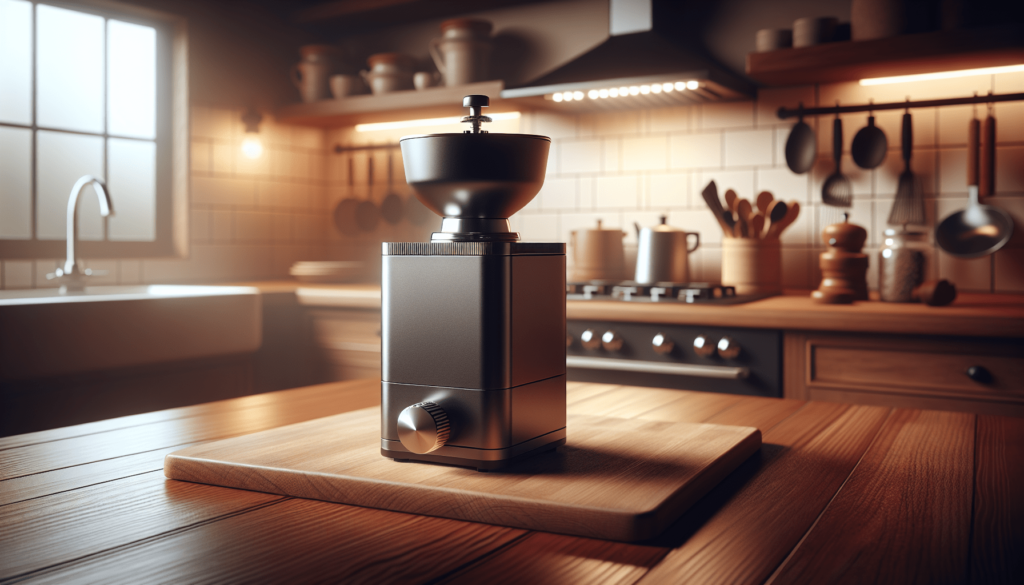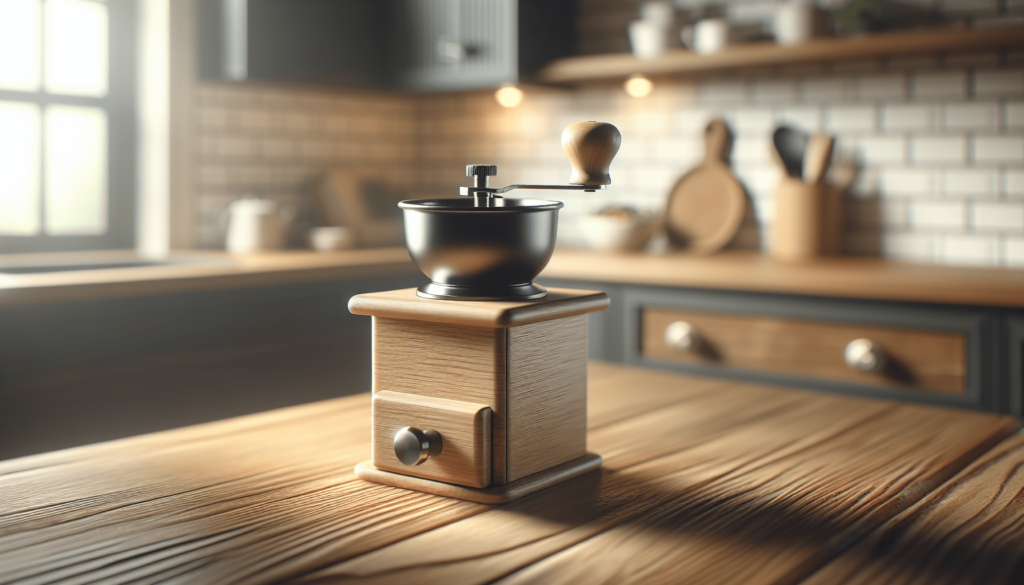Do you love coffee but don’t want to break the bank on a grinder? You’re not alone. Many coffee enthusiasts are on the lookout for the best budget coffee grinders to enhance their everyday brewing experience without spending a fortune. Finding a good grinder can make a remarkable difference in the flavor of your coffee, and you don’t have to spend hundreds of dollars to get a decent one. In this article, you’ll find a detailed guide to the best budget coffee grinders currently available, their features, pros, and cons.

What to Look for in a Budget Coffee Grinder
When you’re trying to get a good coffee grinder on a budget, there are a few things you should keep in mind. Knowing what to look for can save you time and help ensure you get something that meets your needs.
Grinder Type: Blade vs. Burr
There are two main types of coffee grinders: blade and burr. Blade grinders are often more affordable but may not offer the consistency you’ll need for the perfect cup of coffee. Burr grinders, on the other hand, provide more uniform grounds and are generally preferred by coffee aficionados.
Grind Consistency
Consistency is key when it comes to grinding coffee beans. The best budget grinders should offer a range of grind settings from coarse to fine, while maintaining consistency.
Ease of Use
You don’t want a grinder that feels like you need a degree to operate it. Look for models that are intuitive and easy to clean.
Capacity
Consider how much coffee you’ll need to grind at one time. If you often brew for multiple people, you’ll need a grinder with a larger capacity.
Top Budget Coffee Grinders
Here are some of the best budget coffee grinders that provide excellent value for the money.
1. Hario Skerton Plus Ceramic Coffee Mill
The Hario Skerton Plus is a hand-crank grinder that offers excellent grind consistency and is perfect for those who don’t mind a bit of elbow grease.
Features:
- Ceramic burrs for precise grinding
- Adjustable grind size
- Detachable handle for easy storage
Pros:
- Consistent grind size
- Portable and durable
- Easy to clean
Cons:
- Manual operation can be time-consuming
- Limited capacity
2. JavaPresse Manual Coffee Grinder
This manual grinder is well-known for providing a range of grind settings, allowing you to get the perfect grind for various brewing methods, from French press to espresso.
Features:
- Stainless steel burrs
- 18-click settings for various grind sizes
- Compact and lightweight
Pros:
- Excellent grind consistency
- Portable and great for travel
- Affordable
Cons:
- Manual operation
- Takes time to grind larger quantities
3. Krups Precision Grinder
If you prefer an electric grinder, the Krups Precision Grinder offers a variety of grind settings and boasts a user-friendly design.
Features:
- Flat metallic burrs
- 12 grind settings
- Large capacity (holds up to 12 cups of coffee)
Pros:
- Easy to use
- Consistent grind
- Large capacity
Cons:
- Can be noisy
- Bulky compared to manual grinders
4. Cuisinart DBM-8 Supreme Grind Automatic Burr Mill
The Cuisinart DBM-8 is another excellent electric option for those on a budget. It provides a range of grind sizes and is very user-friendly.
Features:
- 18 grind settings
- Built-in timer
- Easy to clean removable parts
Pros:
- User-friendly
- Large capacity
- Good grind consistency
Cons:
- Noise can be an issue
- Slight static buildup in the grind container
5. Baratza Encore Conical Burr Coffee Grinder
While slightly on the higher end of the budget spectrum, the Baratza Encore offers a fantastic range of grind settings and is known for its durability.
Features:
- 40 grind settings
- Conical burrs
- Durable build
Pros:
- High-quality grind
- Wide range of grind settings
- Durable and long-lasting
Cons:
- Higher on the budget scale
- Can be noisy
6. Porlex Mini Stainless Steel Coffee Grinder
The Porlex Mini is a compact, portable manual grinder that’s perfect for travelers and those with limited kitchen space.
Features:
- Stainless steel body
- Conical ceramic burrs
- Adjustable grind size
Pros:
- Portable and compact
- Consistent grind
- Durable build
Cons:
- Small capacity
- Manual grinding takes time
Comparison Table
Here’s a quick comparison table to help you easily see the main features and differences between these grinders:
| Grinder | Type | Capacity | Grind Settings | Price Range | Pros | Cons |
|---|---|---|---|---|---|---|
| Hario Skerton Plus | Manual | Small | Adjustable | $ | Consistent, durable, easy to clean | Time-consuming, limited capacity |
| JavaPresse | Manual | Small | 18 | $$ | Consistency, portable, affordable | Manual operation, time-consuming |
| Krups Precision | Electric | Large (12 cups) | 12 | $$ | User-friendly, consistent, large | Noisy, bulky |
| Cuisinart DBM-8 | Electric | Large | 18 | $$ | User-friendly, large capacity | Noisy, static buildup |
| Baratza Encore | Electric | Medium | 40 | $$$ | High-quality grind, durable | Higher price, noisy |
| Porlex Mini | Manual | Small | Adjustable | $$ | Portable, durable, consistent | Small capacity, time-consuming |
Tips for Getting the Most Out of Your Budget Grinder
Here are some valuable tips to ensure that you make the most out of your budget coffee grinder:
Regular Cleaning
Regular cleaning is essential to maintain the performance of your grinder. Coffee oils and residues can accumulate over time and affect the flavor of your coffee. Disassemble the grinder and clean all parts as per the manufacturer’s instructions.
Using the Right Grind Size for Your Brewing Method
Different brewing methods require different grind sizes. For example, French press needs a coarse grind, while espresso requires a fine grind. Adjust your grinder settings accordingly to achieve the best results.
Avoiding Static Buildup
Static buildup can be a problem with electric grinders. Using a small amount of water or grinding into a metallic container can help reduce static.
Keeping Blades Sharp
If you opt for a blade grinder, make sure to keep the blades sharp for optimal performance. Dull blades can result in inconsistent grind sizes.

Understanding Grind Sizes
Knowing what grind size to use can greatly influence your coffee experience. Here’s a quick guide to help you understand the different grind sizes and their ideal brewing methods:
| Grind Size | Description | Ideal For |
|---|---|---|
| Coarse | Very chunky, similar to sea salt | French press, cold brew |
| Medium-coarse | Gritty, like sand | Chemex, drip coffee |
| Medium | Similar to table salt | Drip coffee machines, AeroPress |
| Medium-fine | Slightly finer than table salt | Pour-over |
| Fine | Smooth, like sugar | Espresso, AeroPress |
| Extra fine | Powdery, very smooth | Turkish coffee |
The Importance of a Good Grinder
You might wonder if investing in a good grinder is really worth it. The short answer is yes. Here’s why:
Flavor Consistency
A good grinder ensures that your coffee grounds are uniform in size, allowing for an even extraction. This results in a balanced and flavorful cup of coffee every time.
Versatility
With a quality grinder, you can adjust the grind size according to your brewing method. This makes it easier to experiment with different brewing techniques and find the perfect one for you.
Cost-Effective
While it might seem like an additional expense initially, a good grinder can save you money in the long run by allowing you to buy whole beans in bulk, which are typically cheaper than pre-ground coffee.
Conclusion
Finding a budget coffee grinder that meets your needs doesn’t have to be daunting. With a variety of manual and electric options available, there’s something for everyone. Whether you prefer the portability and hands-on approach of a manual grinder like the Hario Skerton Plus or an easy-to-use electric option like the Krups Precision Grinder, you’re sure to find a model that enhances your coffee experience without emptying your wallet.
Remember to consider factors like grind consistency, ease of use, and capacity when making your choice. And don’t forget to maintain your grinder regularly to keep it in top shape. Enjoy the journey of finding the perfect budget grinder, and savor every delicious cup of coffee you brew.
